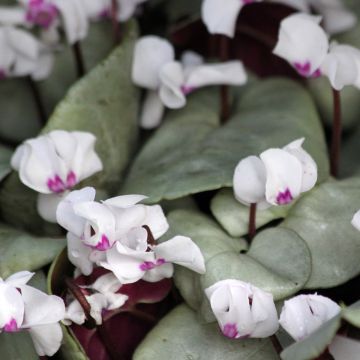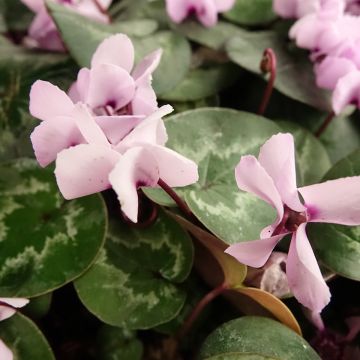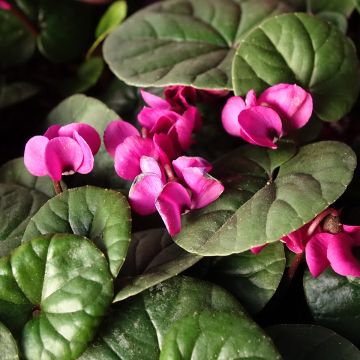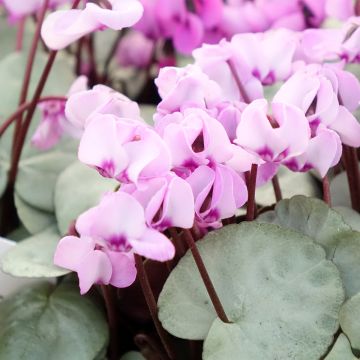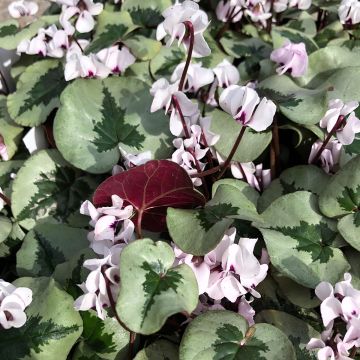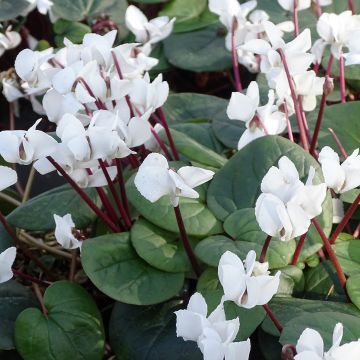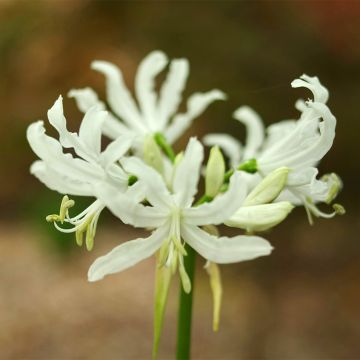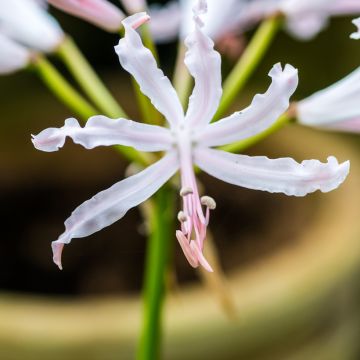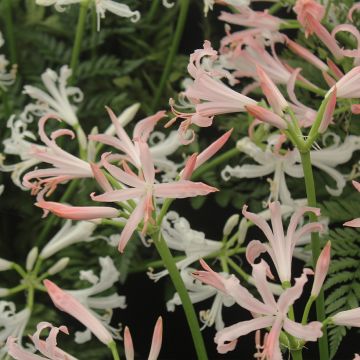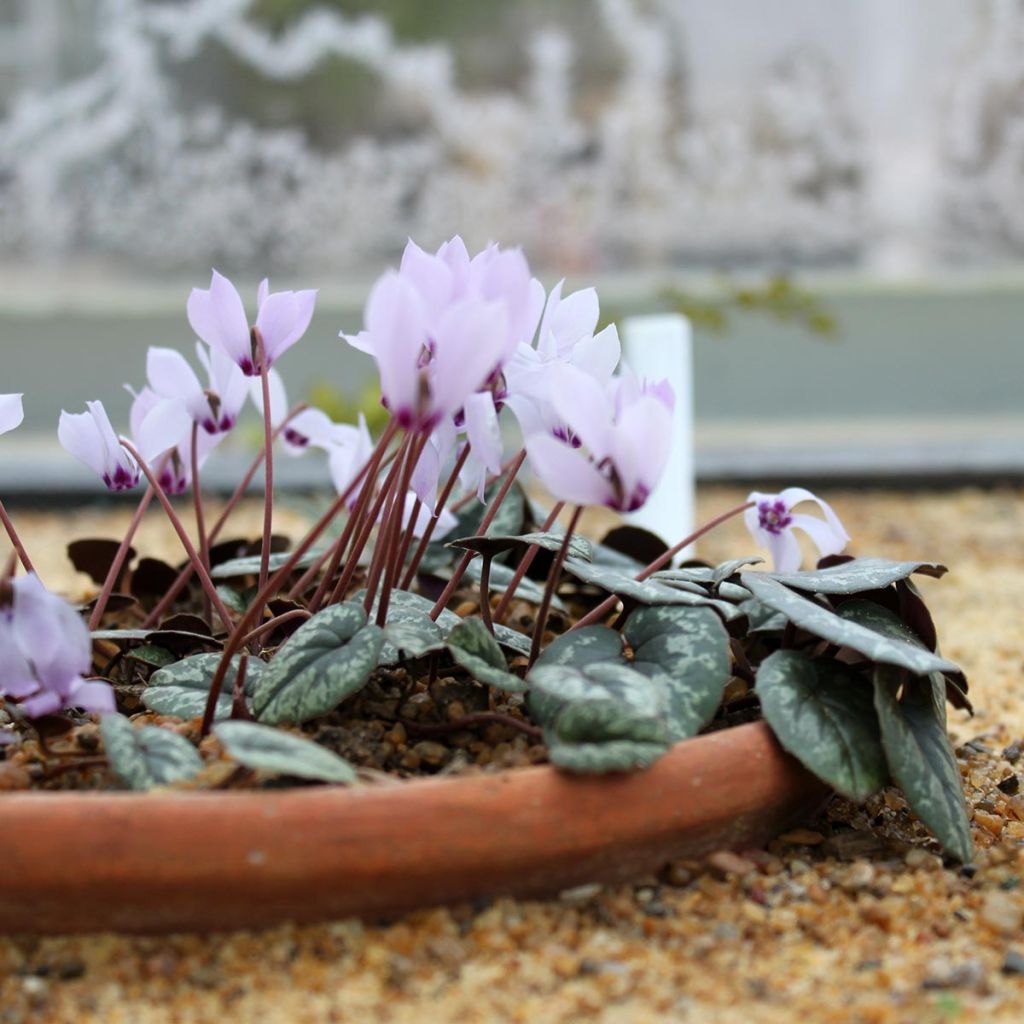

Cyclamen cilicicum rose
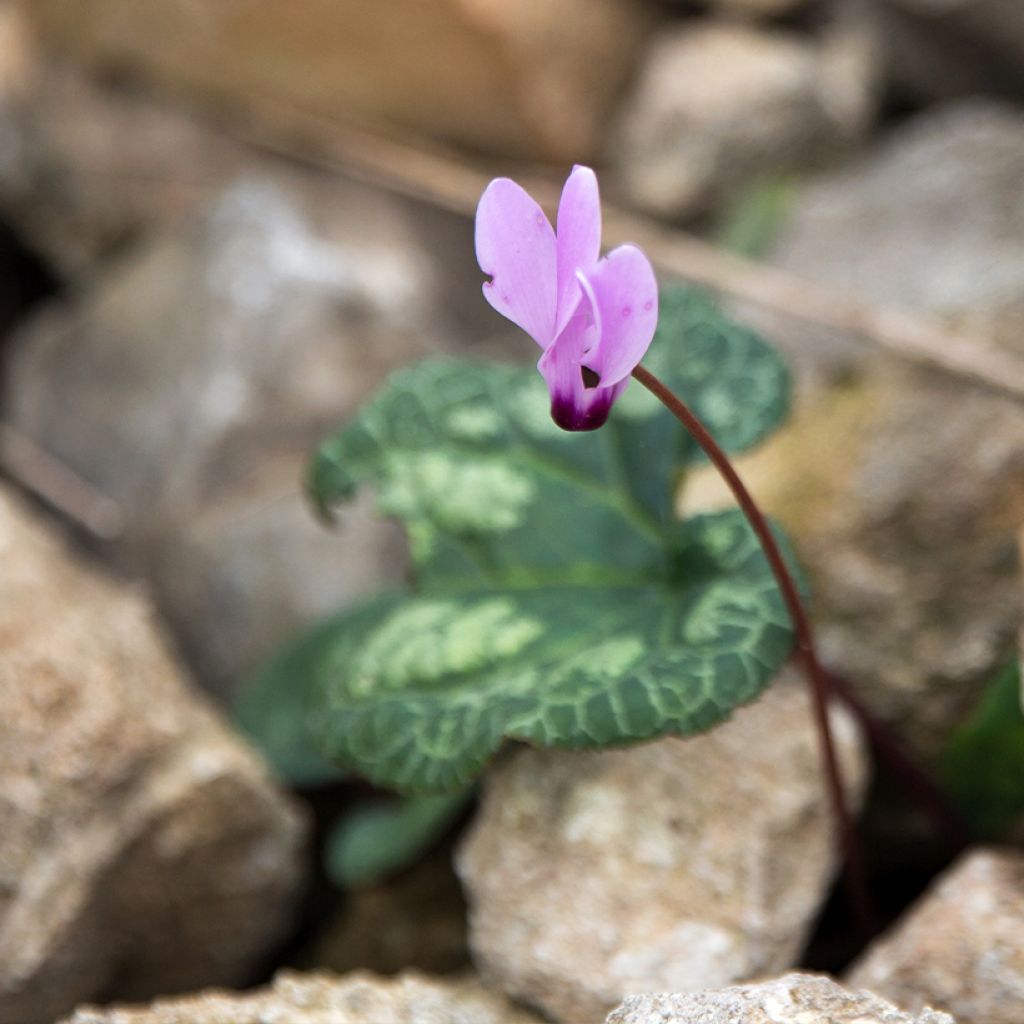

Cyclamen cilicium rose - Cyclamen de Cilicie
Cyclamen cilicium
Cyclamen cilicium
Cilician cyclamen
Bulbs of good quality, in growth upon receipt which facilitated planting. Cyclamen more suited for cultivation in a planter or pots to fully enjoy the rather small flowers. I am fully satisfied, thank you.
PASCAL, 05/11/2024
This plant carries a 6 months recovery warranty
More information
We guarantee the quality of our plants for a full growing cycle, and will replace at our expense any plant that fails to recover under normal climatic and planting conditions.
From €5.90 for pickup delivery and €6.90 for home delivery
Express home delivery from €8.90.

Does this plant fit my garden?
Set up your Plantfit profile →
Description
Cyclamen cilicium (sometimes mistakenly spelled C. cilicicum) is also known as the cyclamen of Cilicia, due to its origins in the former region of Cilicia in southern Anatolia. This deciduous species is rare in cultivation. It is characterised by a beautiful pink autumn flowering and foliage finely marbled in light tones. Slightly less hardy than its cousin the cyclamen of Naples, it is a lovely plant for partially shaded rockeries or rocky woodland areas, perfectly adapted to very dry summers. It naturalises over time.
Cyclamen cilicium is a small perennial plant with a tuberous root (called a tuber) belonging to the Primulaceae family. It is native to Turkey (Taurus Mountains) where it can be found in coniferous forests. This small species measures approximately 10cm (4in) in height when flowering.
The tubers are round and compressed, covered with a smooth brick-coloured 'skin' with roots coming from their centre and base. The foliage generally develops in September-October after a dry summer, at the same time as the flowers appear. The oval-rounded leaves are slightly cordate, with barely dentate edges, and measure about 4cm (2in) in length. The colour of the leaves is a shiny dark green, marbled and maculate, and embroidered with lighter green and silver-white. As soon as the soil dries out slightly, the foliage disappears and the plant goes dormant. This usually happens in June.
Flowering occurs from late September to early November, depending on the climate, just like the cyclamen of Naples. The pointed flower buds, initially lying on the ground, straighten up on reddish peduncles. The flowers are more elongated than those of its cousin and emit a sweet honey fragrance. Each flower is composed of 5 pale-pink petals with contoured, twisted edges. A small purple macule is present at the base of the petals. After pollination, the flower gives way to a small round fruit, with the floral stem spiralling to allow the fruit to touch the ground. Ants, which relish their sweet flesh, disperse the seeds.
Plant it with the white variety as ground cover. They will multiply on their own over time, forming unforgettable carpets in shaded and dry areas of the garden that are difficult to landscape. It is a perfect plant for under the canopy of a deciduous tree in woodland soil. It is quite hardy (-10°C (14°F)), but its tuber dreads excessive humidity, both in winter and summer. It will find its place in a partially shaded rockery, alongside Anemone blanda and liverwort, for example. To enjoy a double flowering, mix them with Cyclamen coum and botanical narcissi from the tazetta group.
Sold in packs of 5 or 15 bulbs, size 13+
Report an error about the product description
Cyclamen cilicium in pictures
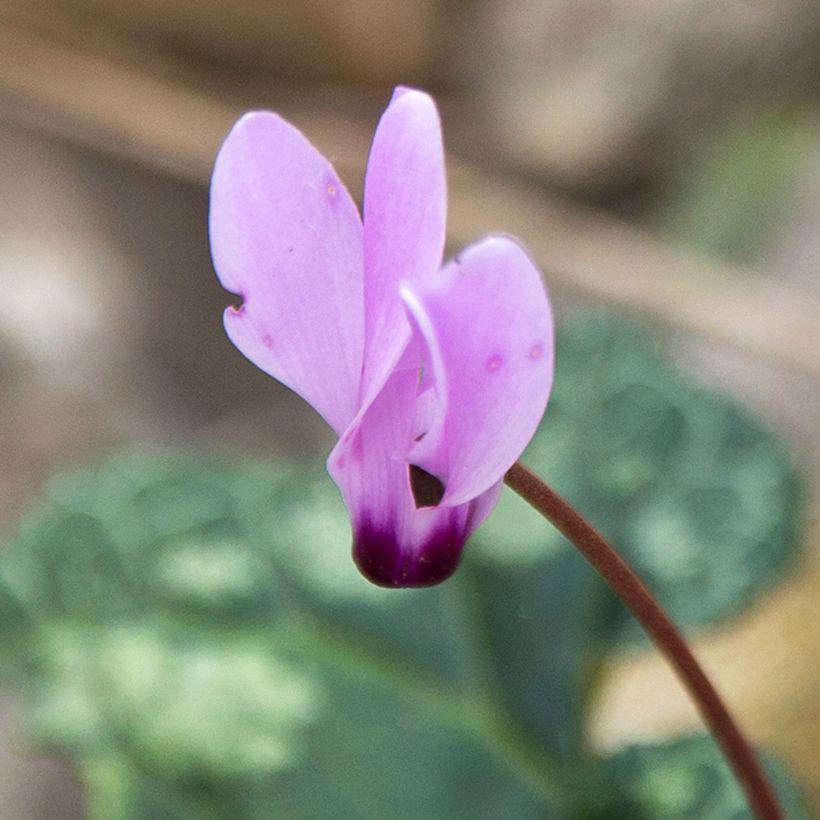

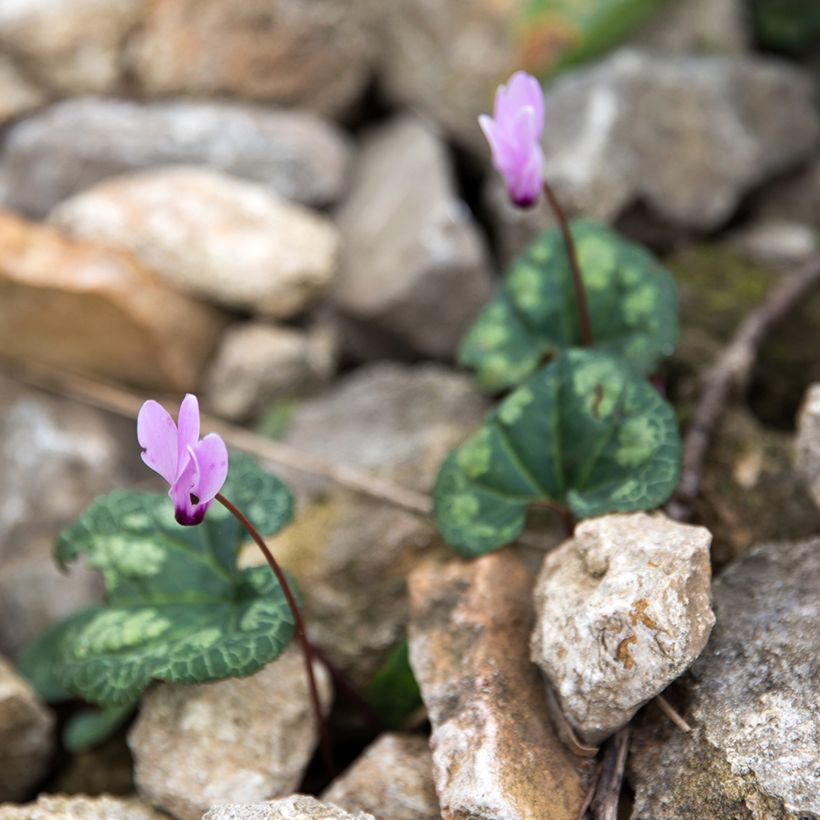

Plant habit
Flowering
Foliage
Botanical data
Cyclamen
cilicium
Primulaceae
Cilician cyclamen
West Asia
Other Cyclamen
Planting and care
Plant your cyclamen bulbs 5cm (2in) deep in light and moderately fertile soil, rich in limestone and compost. The soil must be very well-drained, as cyclamen is sensitive to rotting. Leave a space of 15cm (6in) between each bulb. Place them in shade or partial shade during summer. The smooth part of the bulbs is the bottom. If you are unsure of the planting direction, place your bulbs upright on their side and they will tilt themselves. Water moderately and reduce watering during flowering. Allow for a summer rest period with no excess humidity. For potted plants, apply fertiliser every 15 days.
Cyclamen often take a year to establish and flower. They are quite easy to grow if they are provided with well-drained soil that is somewhat dry in summer and winter. You can plant Cyclamen cilicium with C. coum to enjoy a double flowering in spring and autumn. C. cilicium is slightly less hardy than C. napellus. It doesn't survive below -10°C (14°F). It tolerates very dry summers, and is well adapted to hot climates.
Planting period
Intended location
Care
-
, onOrder confirmed
Reply from on Promesse de fleurs
Autumn bulbs A to Z
Haven't found what you were looking for?
Hardiness is the lowest winter temperature a plant can endure without suffering serious damage or even dying. However, hardiness is affected by location (a sheltered area, such as a patio), protection (winter cover) and soil type (hardiness is improved by well-drained soil).

Photo Sharing Terms & Conditions
In order to encourage gardeners to interact and share their experiences, Promesse de fleurs offers various media enabling content to be uploaded onto its Site - in particular via the ‘Photo sharing’ module.
The User agrees to refrain from:
- Posting any content that is illegal, prejudicial, insulting, racist, inciteful to hatred, revisionist, contrary to public decency, that infringes on privacy or on the privacy rights of third parties, in particular the publicity rights of persons and goods, intellectual property rights, or the right to privacy.
- Submitting content on behalf of a third party;
- Impersonate the identity of a third party and/or publish any personal information about a third party;
In general, the User undertakes to refrain from any unethical behaviour.
All Content (in particular text, comments, files, images, photos, videos, creative works, etc.), which may be subject to property or intellectual property rights, image or other private rights, shall remain the property of the User, subject to the limited rights granted by the terms of the licence granted by Promesse de fleurs as stated below. Users are at liberty to publish or not to publish such Content on the Site, notably via the ‘Photo Sharing’ facility, and accept that this Content shall be made public and freely accessible, notably on the Internet.
Users further acknowledge, undertake to have ,and guarantee that they hold all necessary rights and permissions to publish such material on the Site, in particular with regard to the legislation in force pertaining to any privacy, property, intellectual property, image, or contractual rights, or rights of any other nature. By publishing such Content on the Site, Users acknowledge accepting full liability as publishers of the Content within the meaning of the law, and grant Promesse de fleurs, free of charge, an inclusive, worldwide licence for the said Content for the entire duration of its publication, including all reproduction, representation, up/downloading, displaying, performing, transmission, and storage rights.
Users also grant permission for their name to be linked to the Content and accept that this link may not always be made available.
By engaging in posting material, Users consent to their Content becoming automatically accessible on the Internet, in particular on other sites and/or blogs and/or web pages of the Promesse de fleurs site, including in particular social pages and the Promesse de fleurs catalogue.
Users may secure the removal of entrusted content free of charge by issuing a simple request via our contact form.
The flowering period indicated on our website applies to countries and regions located in USDA zone 8 (France, the United Kingdom, Ireland, the Netherlands, etc.)
It will vary according to where you live:
- In zones 9 to 10 (Italy, Spain, Greece, etc.), flowering will occur about 2 to 4 weeks earlier.
- In zones 6 to 7 (Germany, Poland, Slovenia, and lower mountainous regions), flowering will be delayed by 2 to 3 weeks.
- In zone 5 (Central Europe, Scandinavia), blooming will be delayed by 3 to 5 weeks.
In temperate climates, pruning of spring-flowering shrubs (forsythia, spireas, etc.) should be done just after flowering.
Pruning of summer-flowering shrubs (Indian Lilac, Perovskia, etc.) can be done in winter or spring.
In cold regions as well as with frost-sensitive plants, avoid pruning too early when severe frosts may still occur.
The planting period indicated on our website applies to countries and regions located in USDA zone 8 (France, United Kingdom, Ireland, Netherlands).
It will vary according to where you live:
- In Mediterranean zones (Marseille, Madrid, Milan, etc.), autumn and winter are the best planting periods.
- In continental zones (Strasbourg, Munich, Vienna, etc.), delay planting by 2 to 3 weeks in spring and bring it forward by 2 to 4 weeks in autumn.
- In mountainous regions (the Alps, Pyrenees, Carpathians, etc.), it is best to plant in late spring (May-June) or late summer (August-September).
The harvesting period indicated on our website applies to countries and regions in USDA zone 8 (France, England, Ireland, the Netherlands).
In colder areas (Scandinavia, Poland, Austria...) fruit and vegetable harvests are likely to be delayed by 3-4 weeks.
In warmer areas (Italy, Spain, Greece, etc.), harvesting will probably take place earlier, depending on weather conditions.
The sowing periods indicated on our website apply to countries and regions within USDA Zone 8 (France, UK, Ireland, Netherlands).
In colder areas (Scandinavia, Poland, Austria...), delay any outdoor sowing by 3-4 weeks, or sow under glass.
In warmer climes (Italy, Spain, Greece, etc.), bring outdoor sowing forward by a few weeks.


































